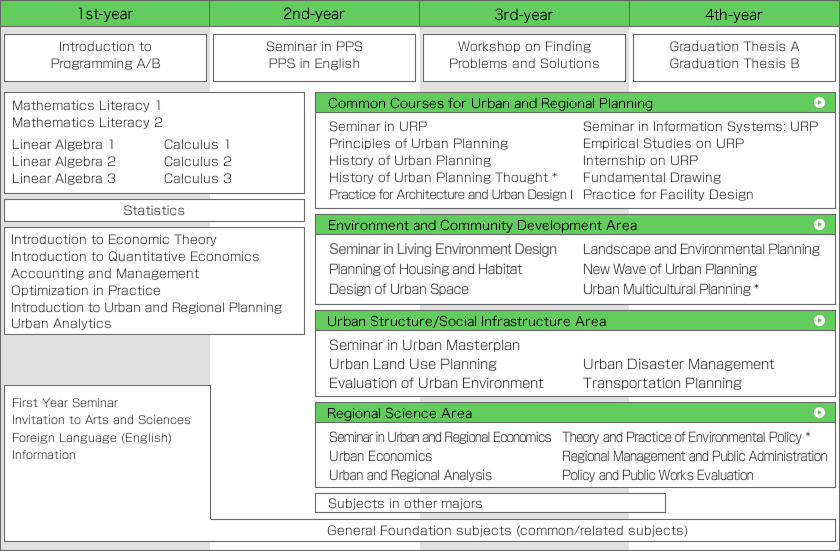Major in Urban and Regional Planning
The curriculum for the Major in Urban and Regional Planning consists of 3 areas: [Environment and Community Development area], [Urban Structure/Social Infrastructure area], and [Regional Science area], in addition to [Common Courses for Urban and Regional Planning].
[Common Courses for URP] help students learn the basics and techniques needed for urban and regional planning generally. The [Environment and Community Development area] deals with from relatively familiar aspects, such as housing and living environments, to town development/urban and regional planning. Students learn space design/town development methods and about the relationship between urban space development and the environment. The [Urban Structure/Social Infrastructure area] approaches to urban and regional planning on an extensive scale. Students learn about infrastructure such as land and city structures and transportation. Lastly, the [Regional Science area] is an area for learning urban and regional planning mathematically and economically.
Basic training courses in urban and regional planning called “Seminar in Urban and Regional Planning”, “Internship on Urban and Regional Planning”, and “Empirical Studies on Urban Regional Planning”, as well as those for the qualification to take architect licensure examinations, are available in this major.
Major in Urban and Regional Planning

*: Provided by collaborative staff (from the College of International Studies)
Compulsory course
| Course name | Course description | Target year |
| Seminar in Urban and Regional Planning | In this course, students will work for specific areas or cities.Through finding problems with city/regional planning and preparing drawings, they will understand the current challenges of regional arrangement. | 2 – 4 |
| Seminar in Information Systems: Urban and Regional Planning | In this course, students will learn basic methods for creating and analyzing spatially expansive information (such as maps and drawings) using specialized applications (CAD, GIS). | 2 |
Links to each Area



